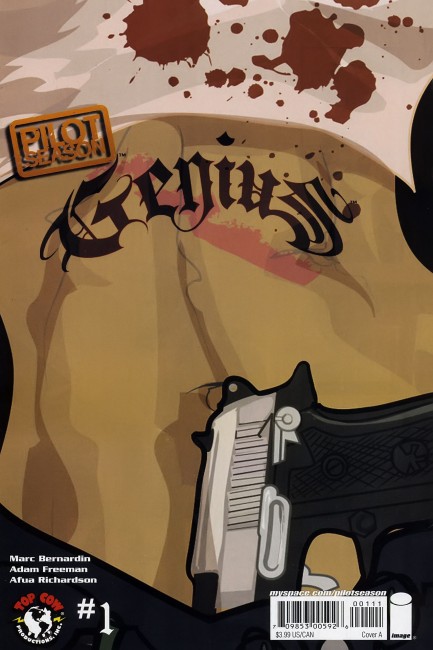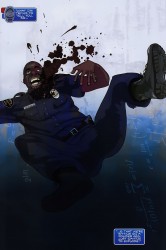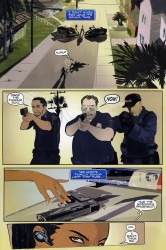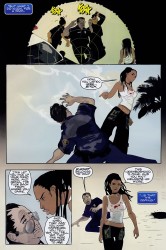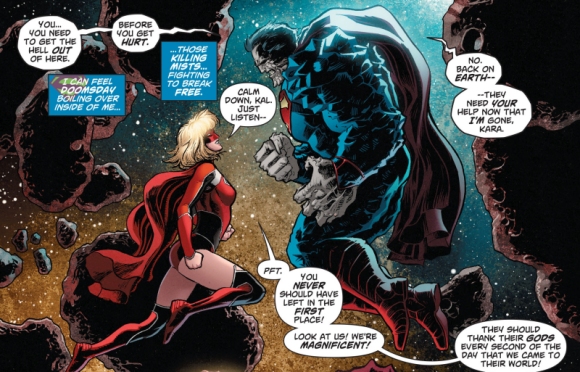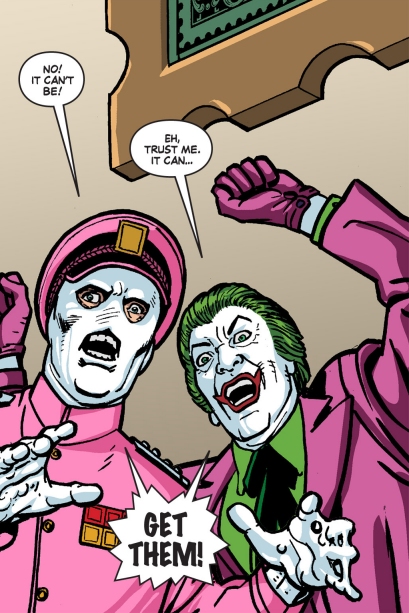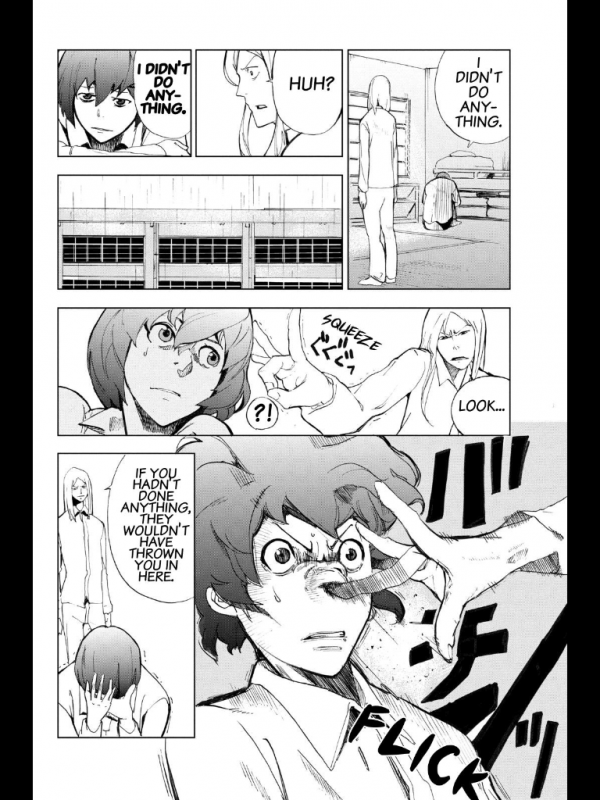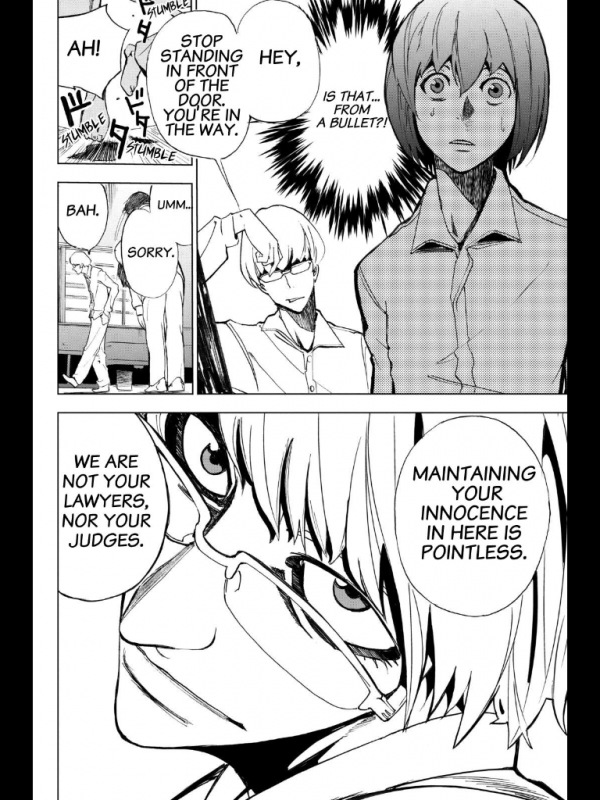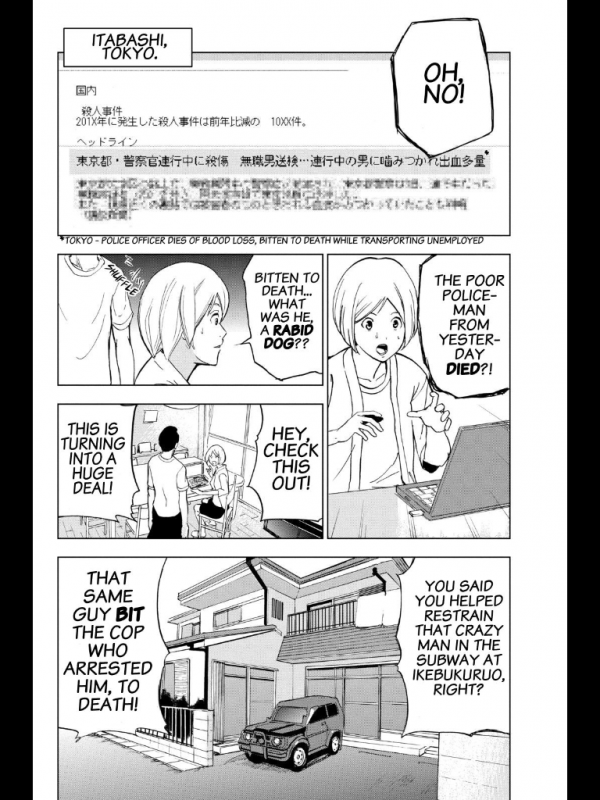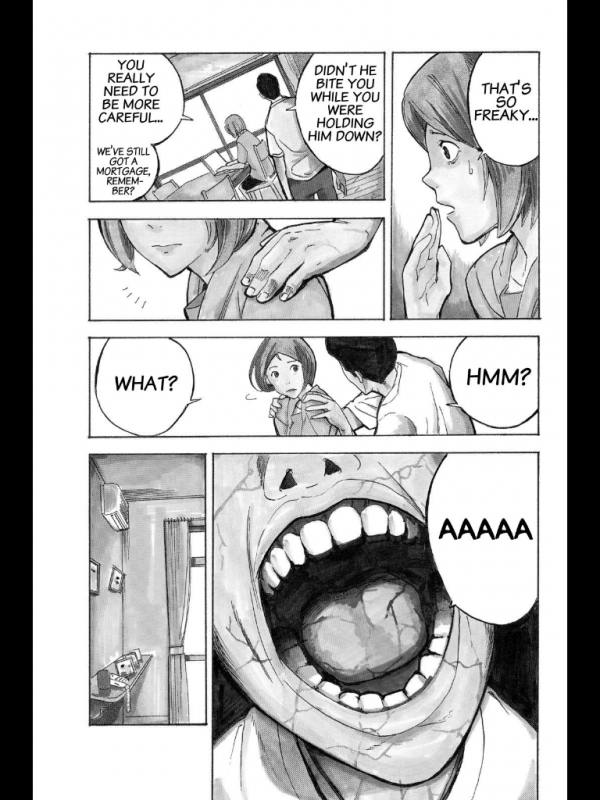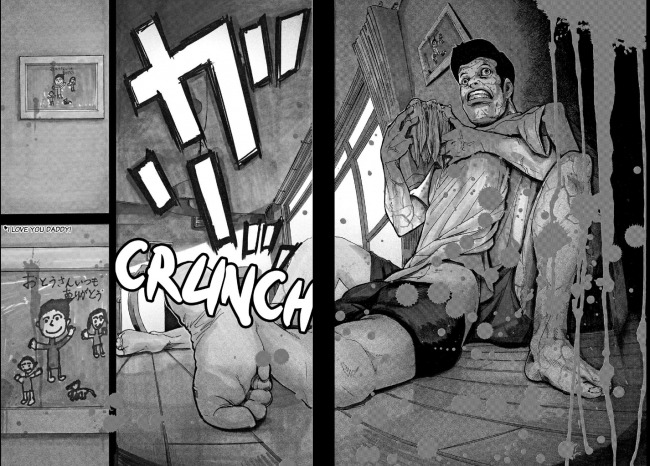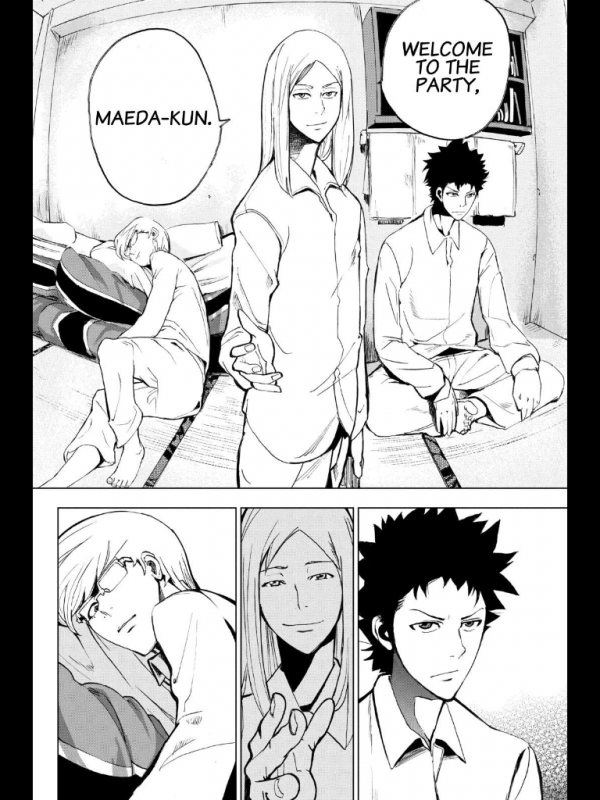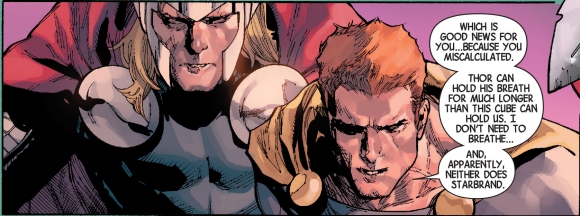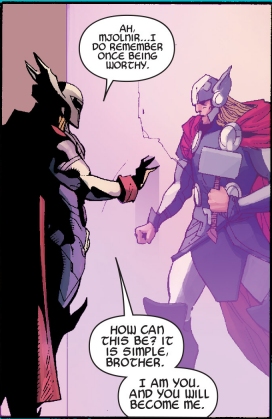I like fight comics, violence-as-genre comics. I like comics where one of the most significant thrills come from the fights. There’s something about a well-done fight scene that turns a solid book into a good one. My true love as far as comics action scenes go is largely choreography. Does A flow into B into C into something incredibly painful-looking but well-drawn? If you give me a fight scene where I can follow every block and punch and shot to its logical conclusion, I’m in heaven. It extends to non-fight scenes, too. Takehiko Inoue’s Slam Dunk is great at depicting basketball in such a way that it feels like real basketball. There’s an implication of motion in well-done action scenes that I really enjoy.
Isolated instances of punches and kicks don’t really move the needle. It’s sort of the default mode of the comics I grew up on, where the action is generally secondary to the plot, so you can’t blow eighteen pages on a fight between two warriors. Loving action is probably part of why I’m drawn to manga. The storytelling standards are different, and if you want to do a six hundred page fight scene, you can. (Takehiko Inoue did in Vagabond.) But at the same time, a little spectacle goes a long way. If the isolated instances are striking or exciting in their own way, that’s about as good as the highly choreographed stuff. Mostly, I just want to be impressed.
I’ve been reading Tsuina Miura and Gamon Sakurai’s Ajin: Demi-Human as it comes out, a manga by currently being serialized on Crunchyroll and seeing print later this year from all-star manga publisher Vertical, Inc.
Here’s a summary of the series:
Seventeen years ago, an utterly immortal human was discovered on an African battlefield. Since then, more of these new and unknown life forms began to appear among mankind. These undying beings start to be known as “demi-humans.” One day, just before summer break, a Japanese boy leaving his high school is involved in a traffic accident that kills him on the spot. Then, he comes back to life. A huge bounty is placed on his capture. Now the boy’s attempt to evade all of mankind begins.
It’s just interesting enough to keep my attention, and sort of pleasingly grim, too. It’s like a turned down action comic, a little slow but plenty mean. Demi-humans can instantly come back fully healed from any wound if they die. This makes them great for human experimentation, but it also has led toward a pretty good “assault on base” scene. Here’s a couple pages from a recent chapter that really got me good:


The men are shooting tranquilizer dots at the man with the rifle in order to capture him. He’s a demi-human, which means he’s functionally immortal, and his gun has real bullets.
I like Sakurai’s style. It’s pleasingly realistic in terms of approach, and even the monsters (not pictured) have a nice weight to them. The characters aren’t very stylized, and there aren’t a lot of wild camera angles unless you count close-ups. It’s cool, it makes Demi-Human interesting to look at.
The little dodge in page one, panel three—that’s a cool thing to put into a comic book gun fight, and the casing being ejected right behind it is something that I really keyed on when I read this the first time. You know how something can seem significant? You notice it and it feels bigger than it seems? This felt like that, and I thought about it until I realized that he must have dodged so fast that he returned fire before the dart probably even got to him. You can almost see the motion, and I like how the panel leads your eye up (the whiffing dart), down (the gunfire), left (the casing), and right (the dodge) basically simultaneously.
Page two, panel 1: his nonchalant face, the detail on his gun and vest, the belt, the motion, and the act itself…what a great idea for a panel. I mean, it’s horrible or whatever, it’s nasty, but it’s something I haven’t seen before and surprising—not shocking—enough to raise an eyebrow and half a smile. The anonymous close-up after is great, like a visual gasp, and then panel three is another new thing. This is Hawkeye in Ultimates 2 cool, Frank Miller discovering ninjas cool. All those speedlines on just one side, too, weighing the panel down.
The next bit implies suicide, and in so doing ups the ante considerably:


Sakurai’s use of reaction shots are well-placed, I realizing. The timing on them in general is great. The way the “huh” comes after the shot but before we see the ooze is crucial for setting the pace for how quickly all this is happening. The man is launched into the air (somehow) and we see them noticing something we can’t see before the ooze reveal. We know something’s about to go down, just not what. Here’s what:

If I saw this in a movie, I would freak out on the spot.
It’s just two panels, but the sense of motion and implied movement are so good. He’s falling more down than back, so his legs kick up in panel two. The lines on the floor tell you how far backward he fell. I’d already been impressed enough to want to write about this before this page, but this was like manna from heaven.
I like watching martial arts-oriented action movies, especially non-American ones, more than just about anything else because the choreography really impresses me. I get to see people do incredibly difficult things at a high level and higher speeds, and watching them set up a punch for a kick for a toss through a window is totally my bag. Great choreo has kept me watching movies that you’d be better off fast-forwarding through, and great choreo combined with a great story is my bread and butter. It’s something I cannot do, but am consistently impressed by and jealous of. It’s not the violence so much as the configuration of the violence, the beauty of bodies in motion. A bunch of my favorite films are borderline bloodless, even.
It’s different in comics, because motion is this whole other animal. It’s implied, because sequential art is composed of single images instead of twenty-four frames a second. I like being able to track action from panel to panel, the perfect moments in time chosen to heighten the impact. I don’t think Sakurai excels at that kind of thing, his approach to continuity isn’t that great, but I do think he has an amazing talent for drawing cool things well. And this scene was a very cool thing. This is the most inventive and immediately impressive by far, but bits like this are littered throughout Ajin: Demi-Human.
It’s a good action comic. The story’s taken some surprising turns after a pretty basic opener, and the action is getting better the more I read. It feels like Black Lagoon without the sleaze, but with a heavy faux-Tarantino accent and magical sci-fi elements. I like that even though it feels so familiar, I can still be surprised by what’s going to happen. It’s like a skillful rendition of an old standard in tone—not super impressive, but still enough to make you feel good. As long as they keep coming with the action, I’m hooked.

